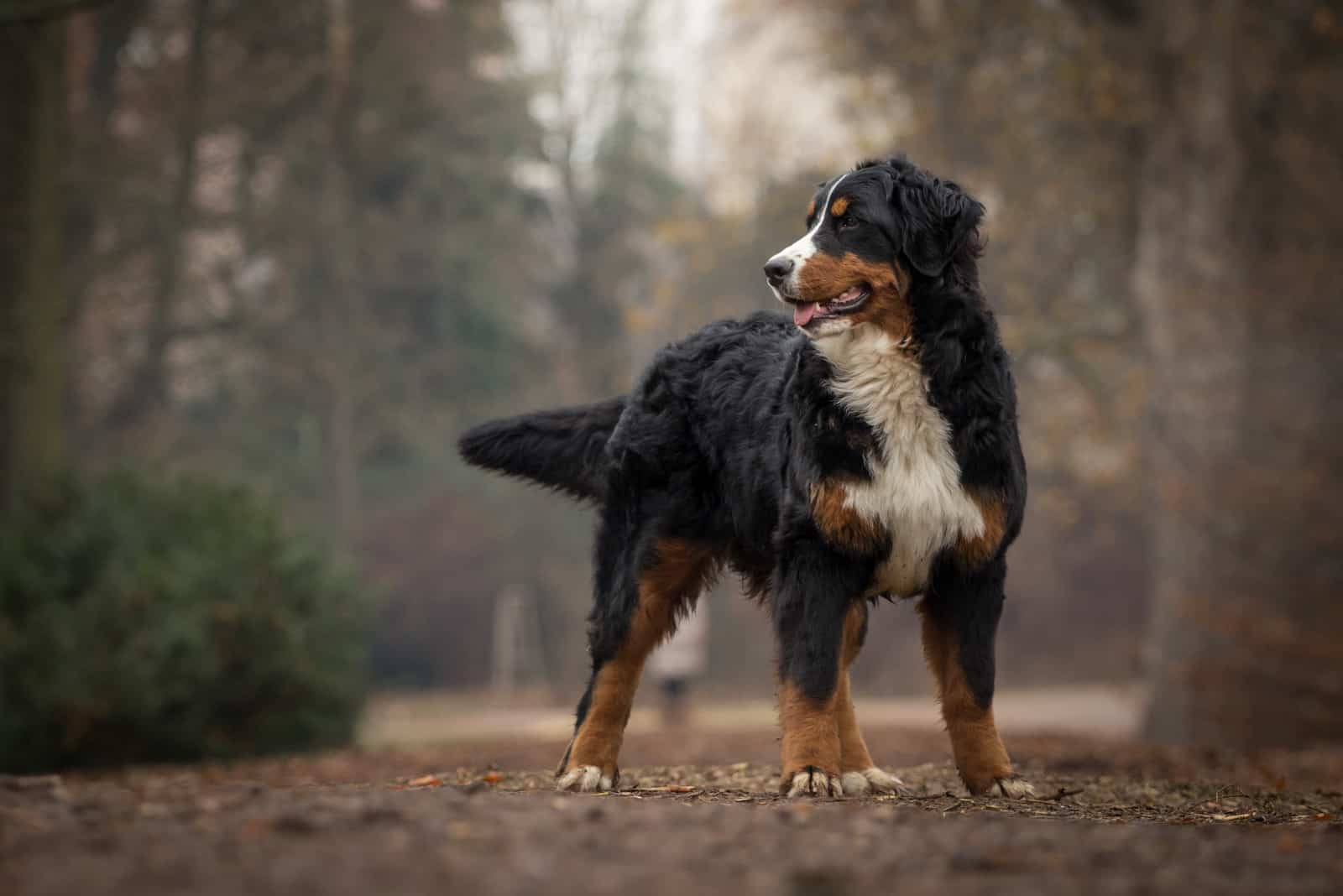Specific Bernese Mountain dog colors are what makes this breed so great. Next to that, the Berner sure is a lovable companion!
And, not without reason… this dog breed from the Swiss Alps is widely known for multiple reasons. Hailing from Switzerland, the Bernese Mountain dog is a large breed that makes an excellent farm dog, working dog, herder, watchdog, and guard dog. They also tend to make great family pets that are known for their playfulness and high energy levels.
Sporting a double coat, these large dogs have very specific Bernese Mountain Dog colors and markings for the breed standard, and breeders are very keen on getting them just right. While looking at a Bernese, you may think that the markings and colors that this family dog has are random.
That, however, couldn’t be further from the truth. Read on to learn about the 3 Bernese Mountain Dog colors that every purebred Bernese Mountain Dog has, along with the markings of Bernese Mountain Dog colors.
Bernese Mountain Dog Colors: Tricolored Coat
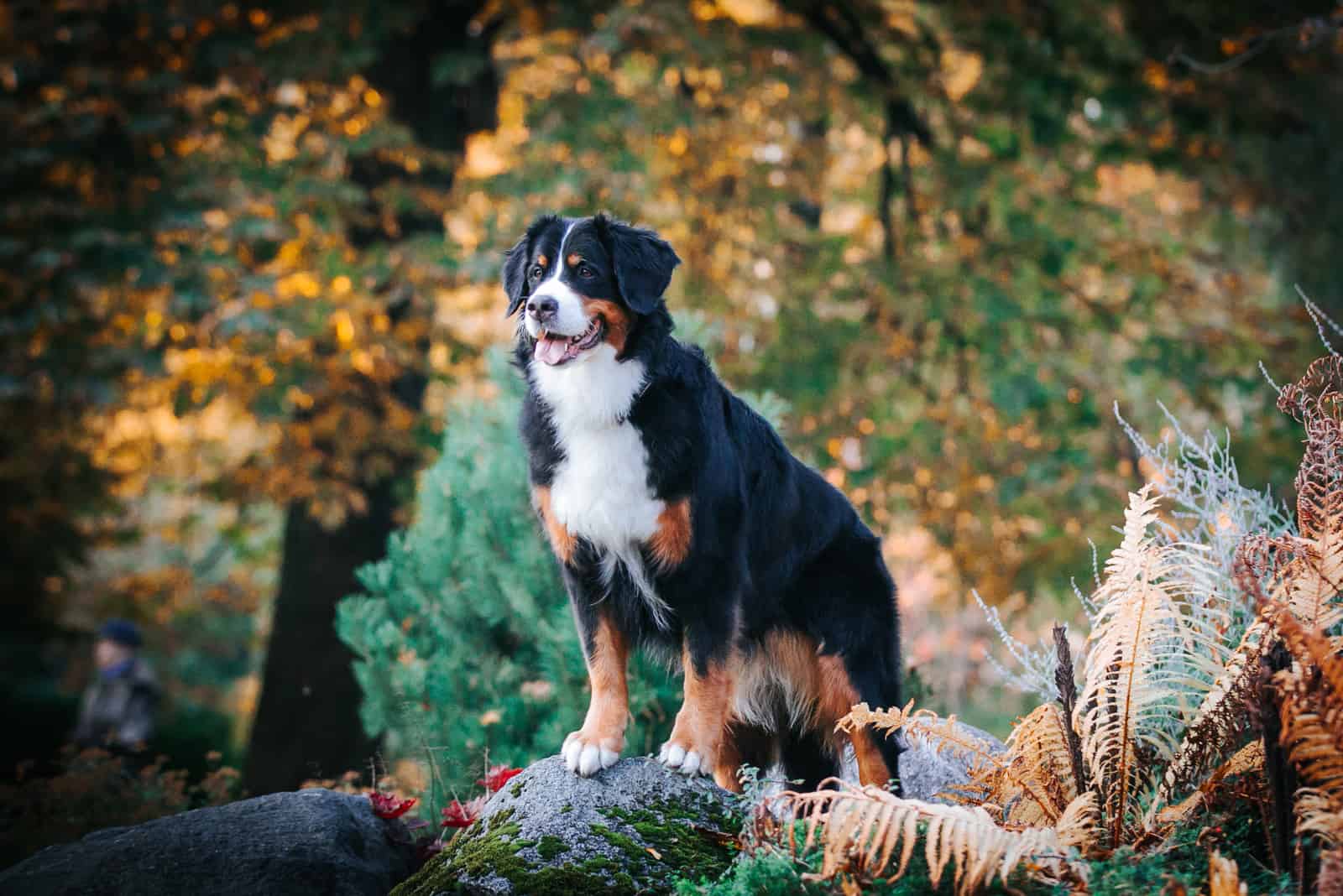
While many dogs, such as the Golden Retriever, have only one coat color, the first thing that everyone notices about a Bernese Mountain Dog is its beautiful tricolored coat. This means that a purebred Bernese mountain dog will always have three colors on its coat according to the American Kennel Club breed standard.
While other color combinations are sometimes noticed in this dog breed, these dogs do not fulfill the breed standard. Reputable dog breeders take great care to achieve the specific coat color combinations of the Bernese Mountain Dog… markings and all.
Keep this in mind when choosing a Bernese Mountain Dog puppy in order to have your pick of the litter!
Also keep in mind that Bernese Mountain Dogs have a double coat, so keeping that tricolor shiny and healthy is a big priority when choosing a Bernese Mountain Dog. They shed a lot, especially during the shedding season, which happens twice a year. Yes, this is even the case with Mini Bernese Mountain Dogs.
Brushing a Bernese Mountain Dog’s coat is vital for stopping the coat from developing tangles, and in some cases, hiding the distinct colors of a Bernese Mountain Dog. That’s why daily brushing is so important for the Bernese Mountain Dog breed.
Let’s have a look at the specific colors of this dog breed.
1. Jet Black
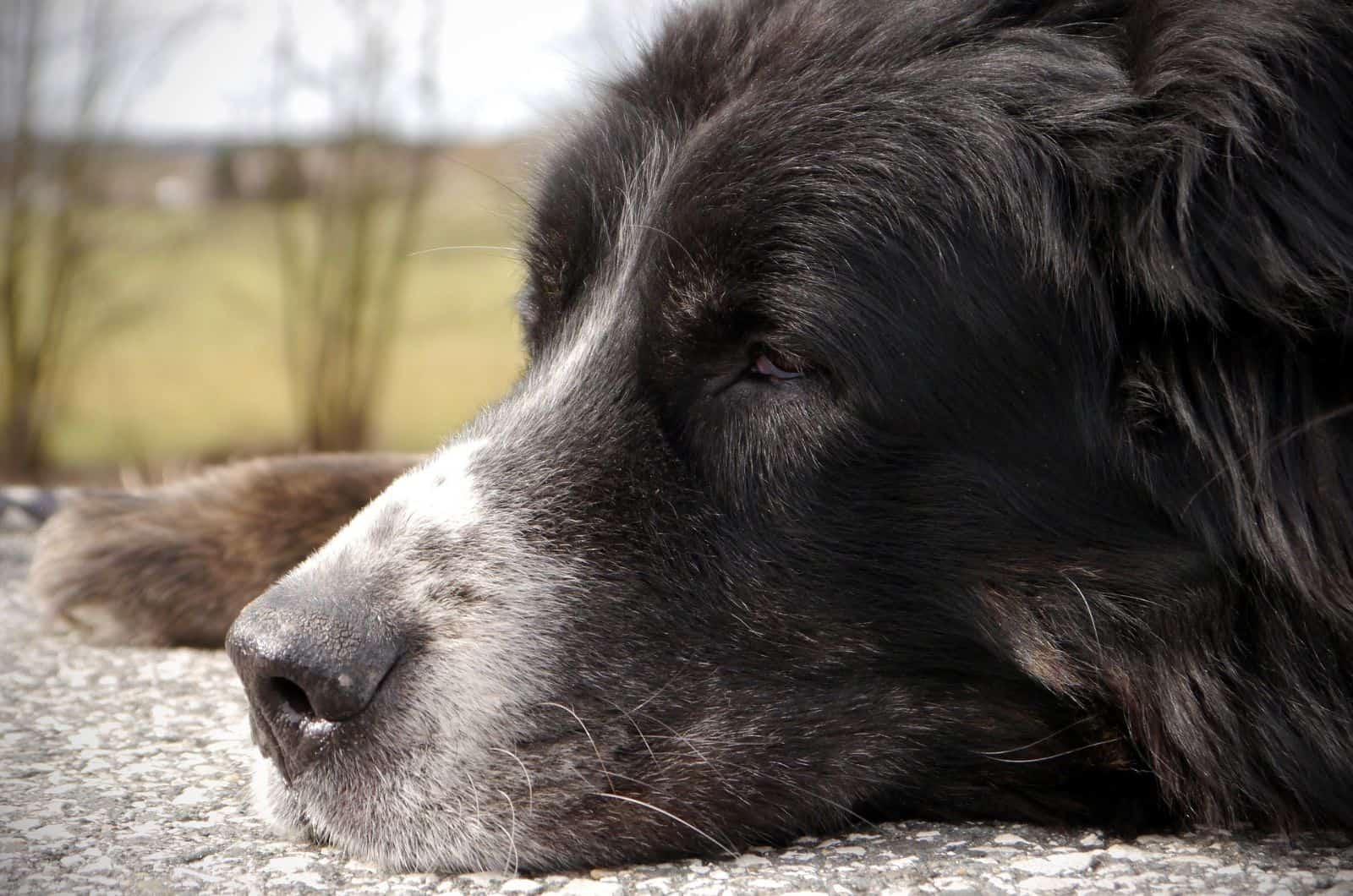
The first color, also known as the ground color of the Bernese Mountain dog, is jet black. Have you ever seen a Bernese Mountain dog that was not mostly black?
Think about that for a minute.
While other colors and markings may be visible in various places of this dog breed, the jet black coat takes up most of the space on the Berner. This jet-black covering on a healthy Bernese Mountain dog tends to shine the most on a tri-colored coat.
2. Clear White
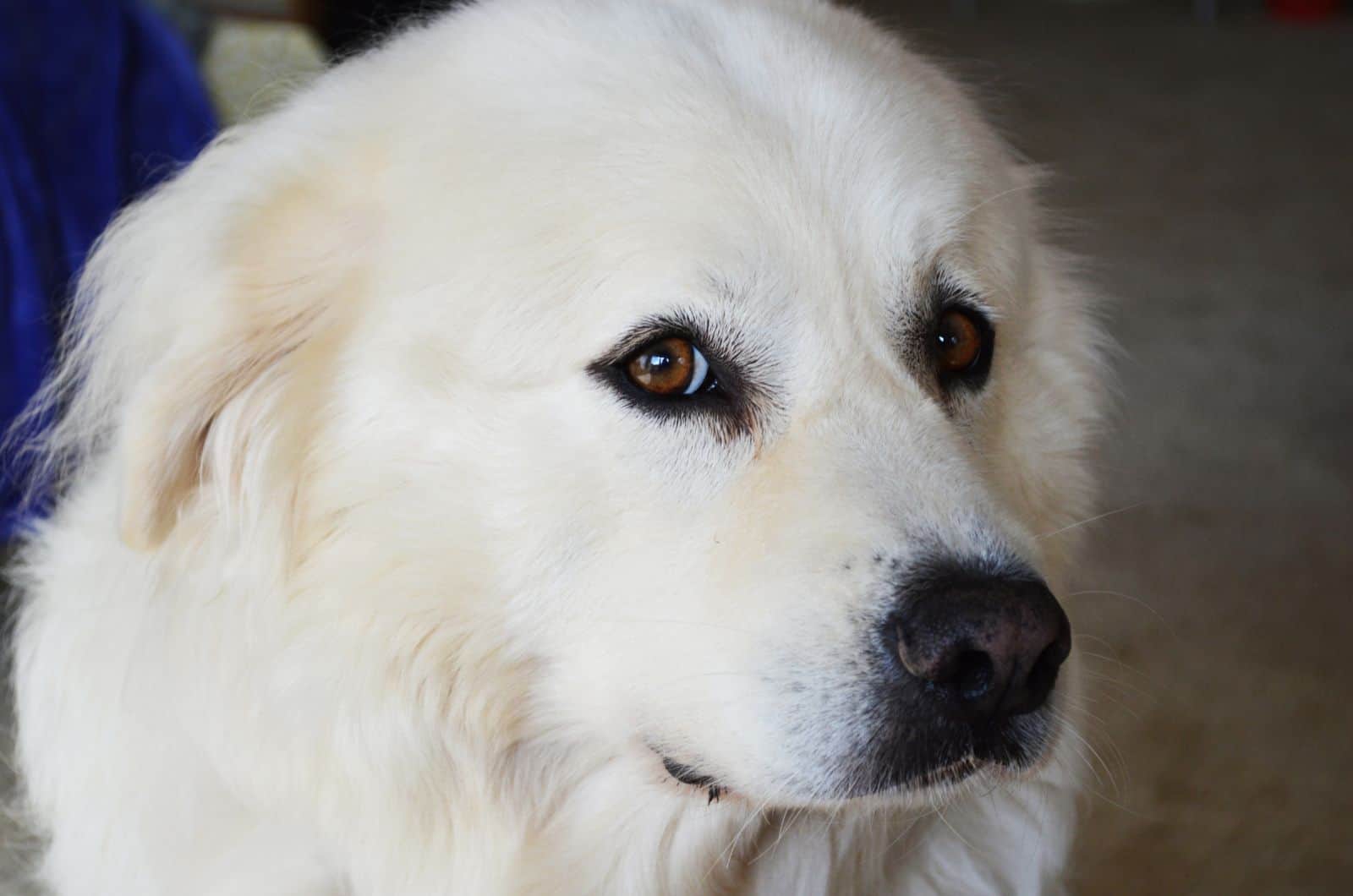
While clear white makes up a much smaller portion of this dog breed’s coat, it is still of vital importance to the breed standard. A purebred Bernese mountain dog simply does not exist without a considerable touch of white.
While the markings of clear white are also important on a Bernese Mountain dog, and are quite famous, we’ll go over that a little later. For now, it is important to know that clear white is the second color you will likely notice on this dog breed’s fur, right after its dominant jet black color.
3. Rich Rust
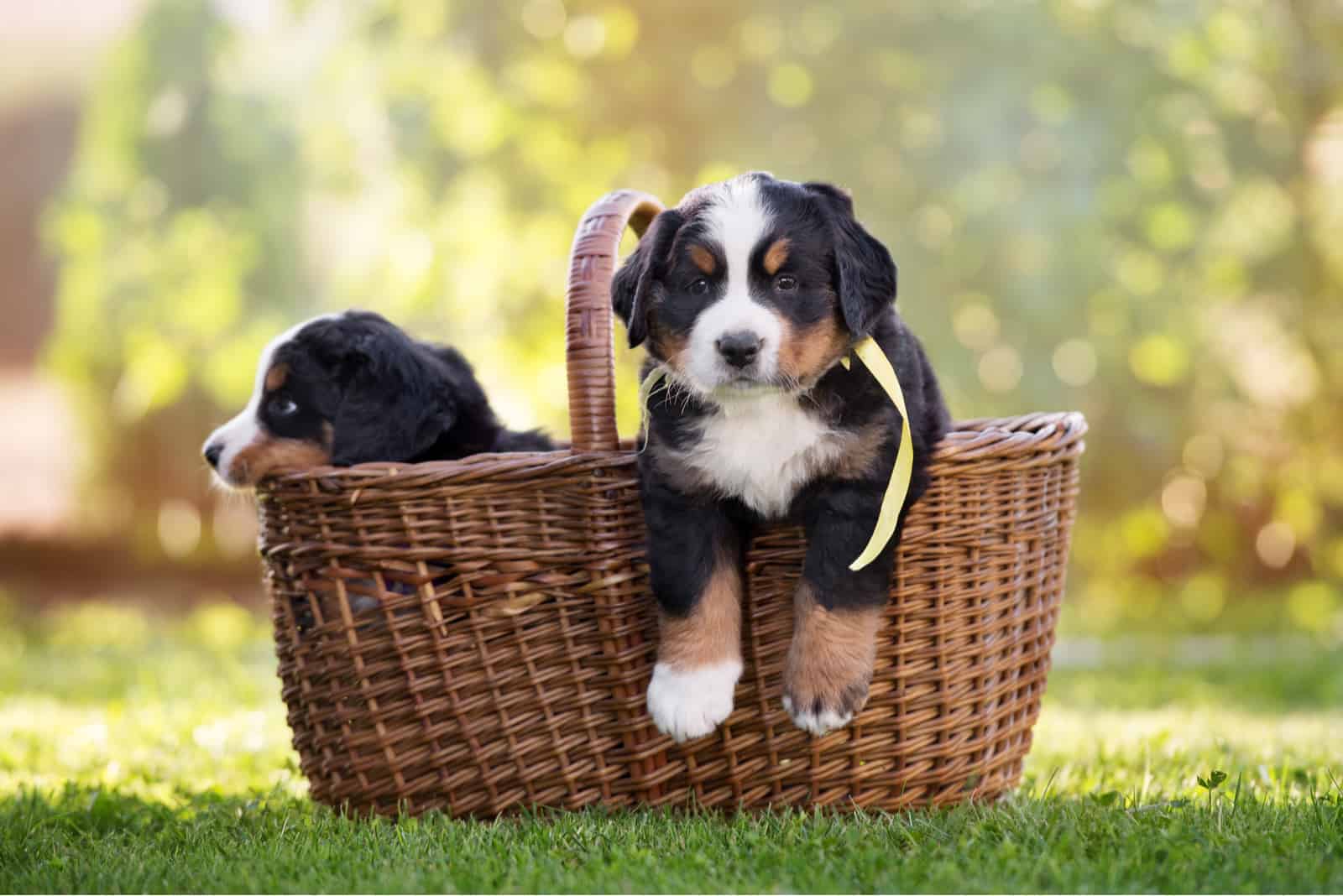
The third color you will find on a Bernese Mountain Dog, which gives this dog breed its specific look is the rich rust in small places over mostly the front of the body.
The Berner simply isn’t complete without the distinct touches of rich rust one finds over its fur, completing the tri-colored coat and fulfilling the breed standard.
Despite making up a small percentage of a Bernese Mountain Dog’s coat, the AKC is clear that there is not a purebred Bernese Mountain Dog without it.
Bernese Mountain Dog Markings
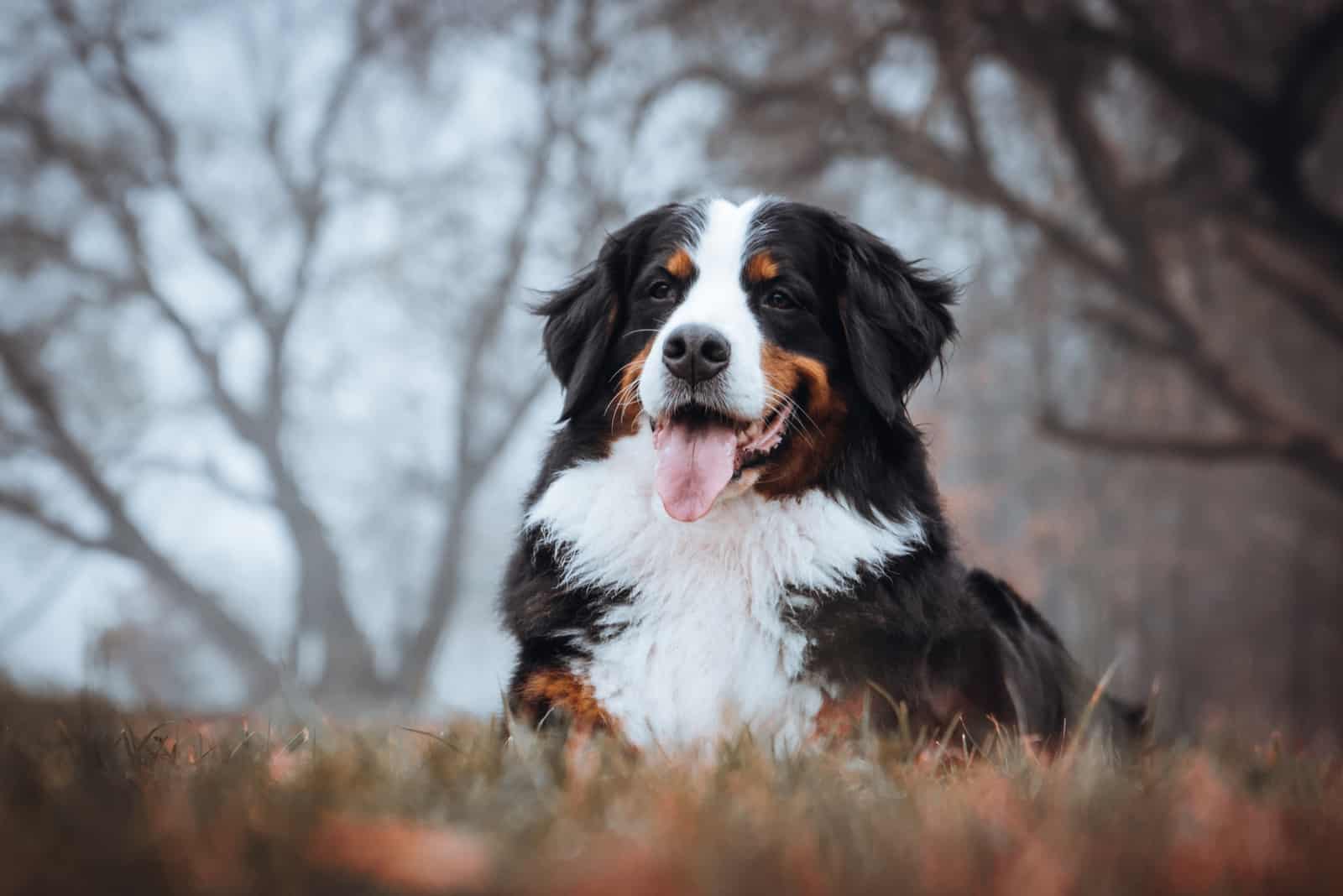
When we talk about the Bernese Mountain Dog, another vital aspect refers not just to the tri-colored coat in terms of what colors the Bernese Mountain Dog has, but also where one can find these colors on the coat.
The Bernese Mountain Dog has to have very specific coloring and markings to fulfill the breed standard. Yes, we’re talking about both male and female Berneses.
Sometimes, it can get a little confusing as breeders will breed two Bernese Mountain Dogs with breed-standard colors and markings, but the Bernese Mountain Dog puppies won’t have the specific markings that their parents have!
It is also not unheard of for two Bernese Mountain Dogs with irregular markings to breed, and yet their puppies turn out to perfectly match the breed standard.
Let’s take a look at the markings on the coat of a Bernese Mountain Dog in order to better understand the coat color of this dog.
Jet Black Ground Color of a Bernese Mountain Dog
As mentioned earlier, jet black is the ground color and primary color of the Bernese Mountain Dog. This is because the Berner would herd sheep during the harsh Alpine winters in Switzerland, and the dark coat covering the back of the Bernese Mountain Dog would work to attract warmth from the sun.
When it comes to a Bernese Mountain Dog’s color and markings, black seems to play not just an aesthetic role in the coat, but a functional one as well.
This is also quite different from many other dogs that come from cold climates. For example, if you look at a Samoyed’s colors, you’d notice how white is dominant.
The jet black of the Bernese covers its tail, the whole of its back, its shoulders, ears, parts of the head, back of the neck, and parts of its legs – taking the place as the dominant color of a Bernese Mountain Dog.
The Swiss Kiss of a Bernese Mountain Dog
The famous Swiss kiss of a Bernese Mountain Dog forms the most characteristic marking of this beautiful dog breed. White markings also play a vital role in identifying a Bernese Mountain Dog.
Bernese Mountain Dogs have white throughout their body. The white around their nose in breed standards forms a horseshoe pattern while the white on their chest looks just like a Swiss cross when you take a look at it from the front.
However, if you look closely at a Bernese Mountain Dog, you will find that they also have a small white spot on the back of their neck where the shiny black coat surrounds them.
This is the trademark “Swiss kiss” of the Bernese Mountain Dog, and it constitutes one of the most recognizable traits of the aesthetic tri-colored coat.
While all other aspects of the tri-colored coat are vital to the coat color matching the breed standard, the Swiss Kiss is that little detail that is important to breeders, which makes the Bernese Mountain Dog a breed with a beautiful coat.
For the finishing touches of white markings when it comes to Bernese Mountain Dog colors, you can’t forget the tip of the tail as well. While most of the tail is jet black, it finishes off with a white tip.
Rust markings of a Bernese Mountain Dog
When it comes to the extra rich rust markings of Bernese Mountain Dog colors, purebred dogs will have smaller rust markings over each eye, each side of their chest, all four legs, and also the underside of the tail.
These are the key points you want to look for, and it also helps to understand that rust markings on a Bernese Mountain Dog should be symmetrical, as this also indicates AKC-level breed standards.
This completes the different marking indications of Bernese Mountain Dog colors, and they are not the only tri-colored dogs out there, which is why their markings are so important. It allows you to understand if you have a purebred Bernese Mountain Dog at all.
FAQs
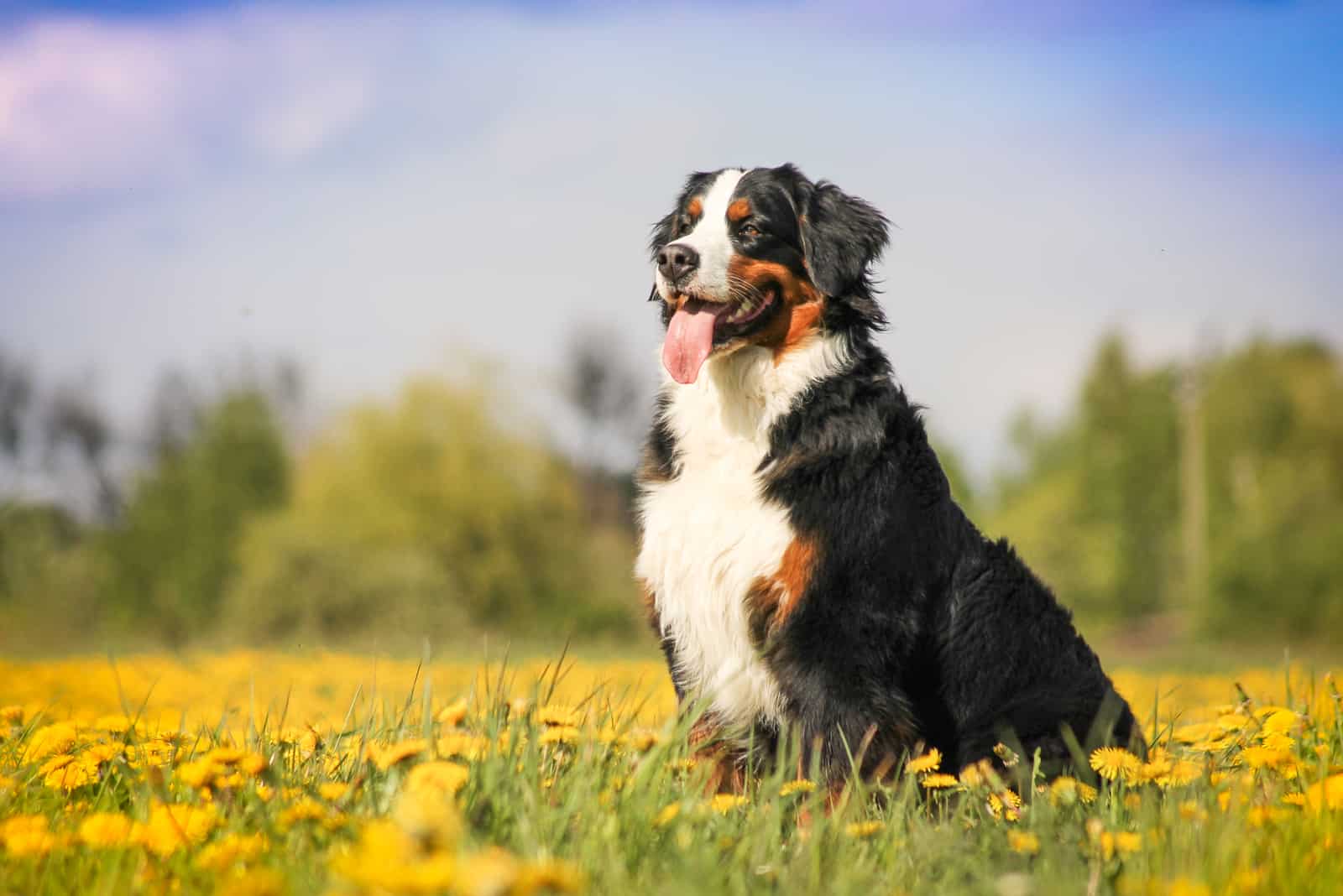
Why does my dog have Bernese Mountain Dog colors and markings, but looks different?
Sometimes, there is common confusion regarding the Bernese Mountain Dog colors. Not because they are hard to identify, but believe it or not, Bernese Mountain Dogs are not the only breed to have this specific tri-colored coat and markings.
Below, you will find a few other breeds and possibilities as to why your Bernese Mountain Dog doesn’t fit the general description despite having all the relevant colors and markings.
Your Bernese Mountain dog isn’t purebred
It is possible that your Bernese Mountain Dog isn’t purebred, which is why they may have the same colors, but have a different build or coat type.
Keep in mind that the coat of a Bernese is shiny, and tends to be medium length… even longer when compared to its other mountain dog counterparts. They are also larger than the other breeds, except for one, while having similar energy levels.
Your dog is an Appenzeller Sennenhund
This is another breed of the four mountain dog breed types that have the same Bernese Mountain Dog colors and coat. It has much shorter hair, however, and the Appenzeller Sennenhund is mainly used for herding cattle.
Your dog is an Entlebucher Mountain Dog
This is the smallest of the four related mountain dog breeds, and according to the AKC, it has the same Bernese Mountain Dog colors. However, the Entlebucher Mountain Dog is the smallest and fastest of the four related breeds, and it is primarily used as a cattle drover.
Your dog is a Greater Swiss Mountain Dog
This is the biggest of the four breeds of related mountain dogs. The Greater Swiss Mountain Dog also has much shorter fur than a Bernese Mountain Dog while having the same Bernese Mountain Dog colors, for the most part.
While all of the dog breeds mentioned above also have the same type of coloring and markings, they also tend to be a little more varied. Some are larger while some are smaller. In any case, they are all farm dogs that have been bred for multiple purposes.
Are all Bernese Mountain Dogs tri-colored?
According to the American Kennel Club and the Bernese Mountain Dog Club of America, Bernese Mountain Dogs indeed have to be tri-colored in all cases. This makes up the Berner Sennenhund standard that makes the Bernese Mountain Dog breed so specific.
If your dog looks like a Bernese, but it is not tricolored, it isn’t purebred, and it could be a different breed altogether.
Does the color of a Bernese Mountain Dog affect its price?
This depends upon specific breeders, but Bernese Mountain Dogs can indeed be pretty pricey. This is especially true if you want to purchase a purebred Bernese. The typical Bernese Mountain Dog can be $1,000 to $3,000, though it is not uncommon for these large dogs to cost much more than even that.
Whenever these dogs are born as mixes, or don’t have the proper Bernese Mountain Dog colors or markings, they can be a lot cheaper as this is a disqualification from the American Kennel Club standard.
Is Brown a Bernese Mountain Dog Color?
While a Bernese Mountain Dog can’t have a ground color of brown, it is possible for the rich rusty coloring we mentioned earlier to have tan markings.
Many breeders are known to have had tan markings as a Bernese Mountain Dog color in shows without any type of disqualification.
It is important to mention, however, that this is typically very rare, although it is accepted by the AKC.
Conclusion
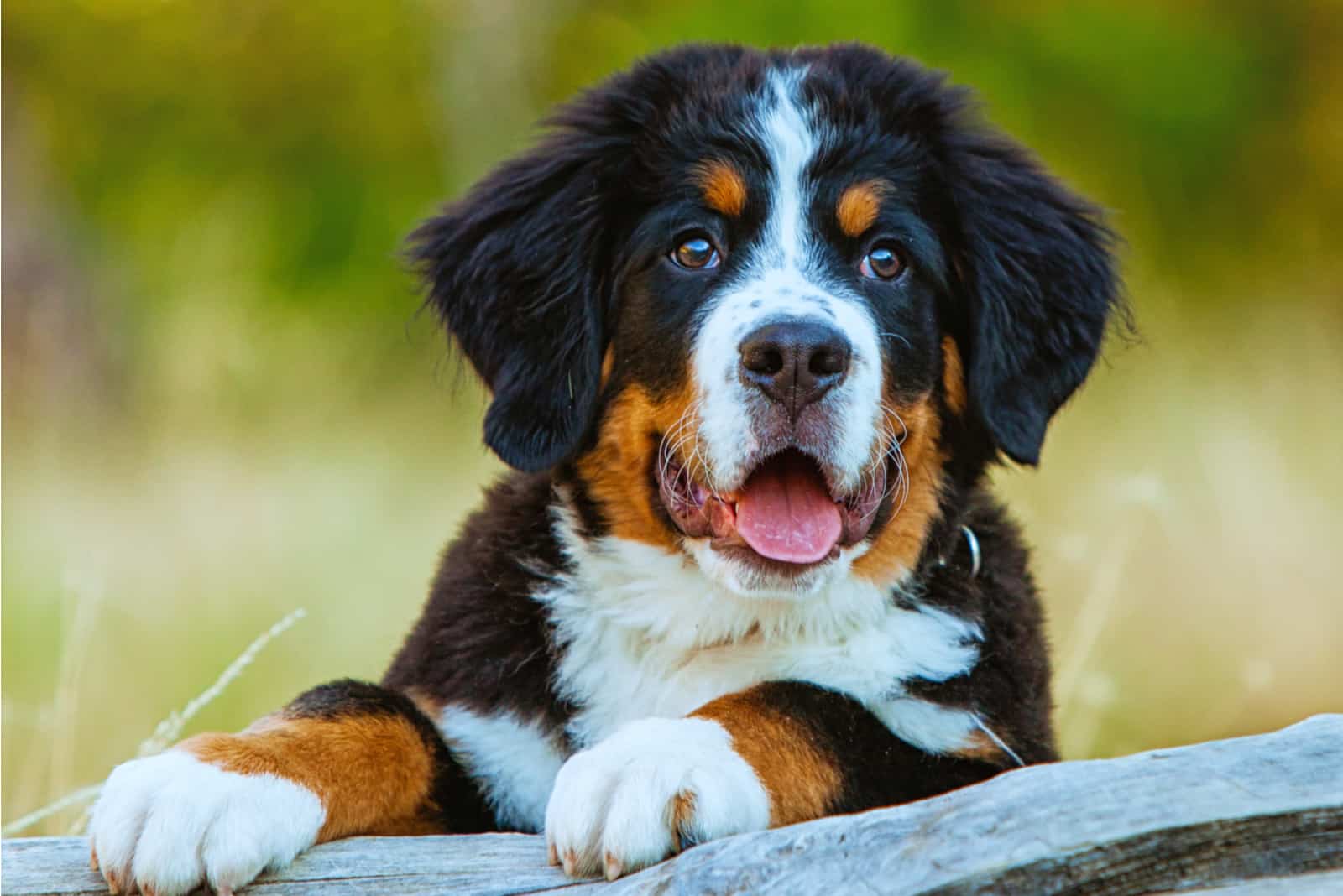
We all know that Bernese Mountain Dogs can be the perfect family pet. Originally from Switzerland, they are gentle, loyal, self-confident, and protective dogs with high energy levels.
They have a medium-length, tri-colored coat according to the AKC. These colors include black as the primary color, with white markings and rich, rust markings that can sometimes be tan.
These large breeds come from the Swiss Alps where they became the favorite dog choice for herding, being a watchdog, being a working dog, and completing other farm activities despite having a low life expectancy, and different health issues such as bloat, hip dysplasia, elbow dysplasia, Von Willebrand’s disease, and progressive retinal atrophy.
They also have their origin in Roman Mastiffs that the Romans bred to flock sheep a long time ago.
While there are similar breeds with much of the same coat color, there are none quite like the Bernese Mountain Dog as they are different in build and size, though closely related.
Make sure to talk to a reputable breeder if you have the aim of getting a purebred Bernese Mountain Dog with the right color and markings.
READ MORE:
Dachshund Colors: A Guide On Picking The Right Coat Color
